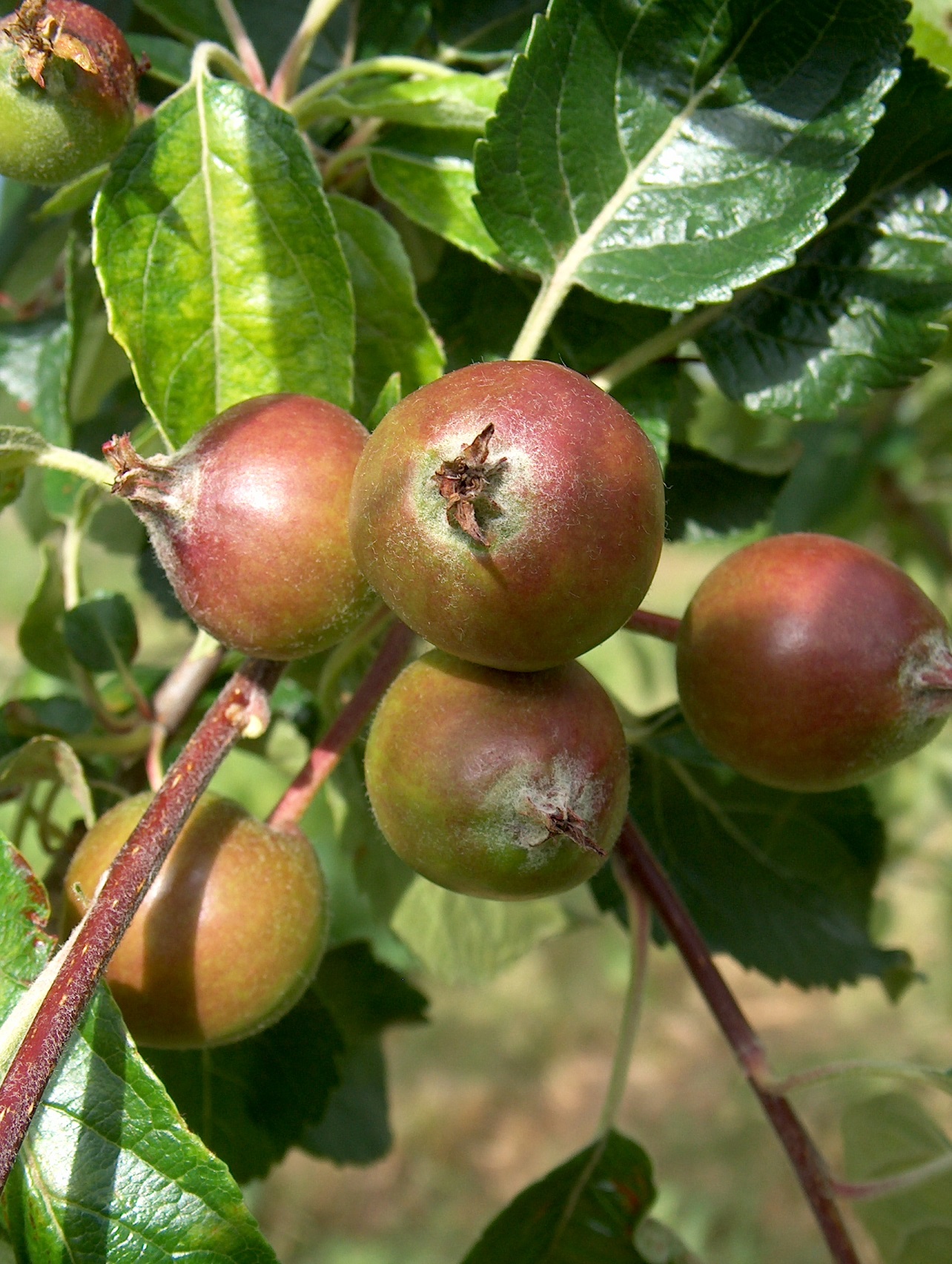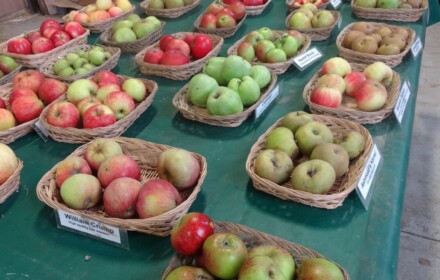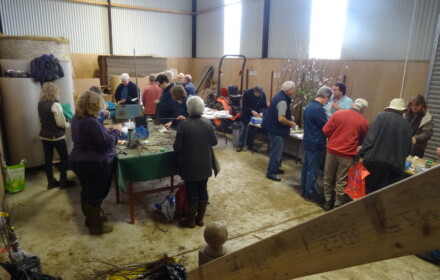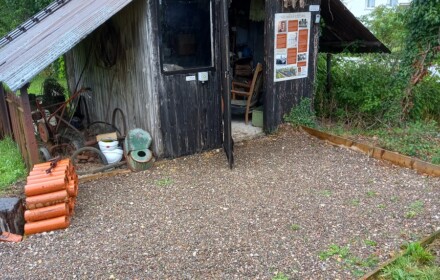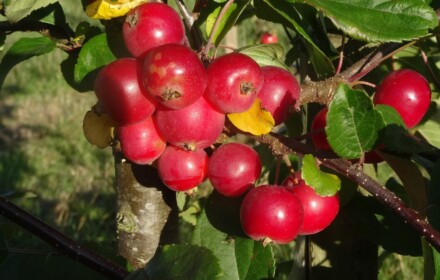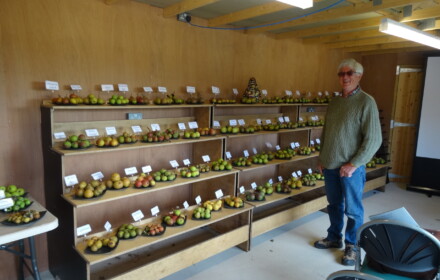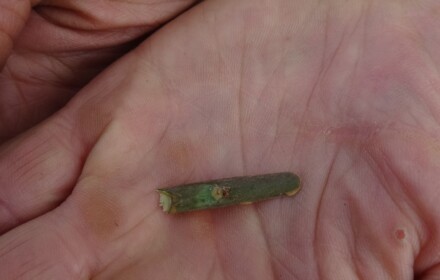Once into cropping many fruit trees can produce more fruit than they can really maintain. As a result they shed poorly pollinated fruitlets and excess fruit early summer in what is known as the ‘June drop’. However if you are lucky you may still have an abundance of fruit. So now is the time to thin and it really can be a case of less meaning more!
There are a number of benefits to thinning your fruit crop in late June and no later than mid July.
-
You will be allowing the remaining fruits to develop to a good size, you will not be reducing
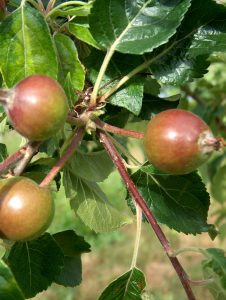 your crop!
your crop! -
There is less chance of branches breaking, this can be particularly the case with plums.
-
Reduces biennial bearing where trees overproduce one year and have a rest the following year. There is no guarantee however!
-
Improved air circulation results in less likelihood of diseases. If fruits are kept slightly apart there is less chance for fungal diseases to spread.
-
It is a chance to remove imperfect fruit – those apples with sawfly damage, plum with plum, moth larvae in them or damaged in any way
-
More light is allowed in which helps with ripening and colouring up the fruit
- Do not allow young fruit trees to fruit in their first year after planting ideally and aftyer that gradually allow the amount of fruit ripening to gradually increase.
When you have the chance thin do not be too concerned about exact spacings just think about the final size of the fruit and allow space for them to swell to their eventual full size unimpeded.
-
Dessert apples – apples produce fruit in clusters so reduce to one or two fruits per cluster about 3-6” apart. Remove using secateurs, strong scissors or thumb & forefinger any blemished fruitlets including if present any ‘King’ fruit. These are apples in the centre of the cluster that are often larger than
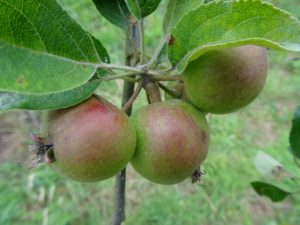 the others but may be abnormally shaped and will have a swollen stalk which can be a source of infection. The photo left clearly shows a swollen stalk. The apple on the left also seems to have some sawfly damage, but best to remove the central ‘king fruit’.
the others but may be abnormally shaped and will have a swollen stalk which can be a source of infection. The photo left clearly shows a swollen stalk. The apple on the left also seems to have some sawfly damage, but best to remove the central ‘king fruit’. -
Culinary apples – apply the same thinking as with dessert apples but thin wider apart leaving just one per cluster to allow these larger apples to reach their full size. If you have any very early cookers – we grow a few Early Victoria, Rev W Wilks & Grenadier ideally thin these even earlier than the end of the ‘June drop’ during June so you are allowing these apples time to reach their full size.
-
Pears – in the early stages they grow upright then bend down as they swell. Usually pears need less thinning. If you have a good crop reduce to two fruits per cluster 3-6” apart. .
-
Plums – can produce so much fruit that branches can be pulled down and even break. This is a shame because it is the loss of productive fruiting material in the future. The tree(s) can then
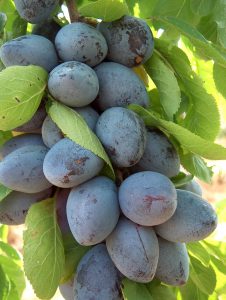 become biennial bearing. Far better top aim for a steady production of plums each year than overcrop one year then little or none the following. The photo right shows un thinned plums approaching maturity, if there was a fungal infection it would spread quickly.
become biennial bearing. Far better top aim for a steady production of plums each year than overcrop one year then little or none the following. The photo right shows un thinned plums approaching maturity, if there was a fungal infection it would spread quickly. -
Thin to have fruits about 2-3” apart as in photo below. This will lighten the load, allow good air circulation, reduce the chance of fungal infection which can spread very quickly between fruits as they become ripe and touch each other. Remove any plums with a maggot hole in them and ideally dispose of off site. They will not ripen fully anyway and will shed
 earlier aswell.
earlier aswell. -
This is a busy time for attention to plums! Now is a good time to prune established plums. Do not prune plums or stone fruit trees in the autumn or winter to prevent fungal infection.
-
Cherries – most will be ripening a deep red now. They do not need thinning. You will have done well to get a crop of cherries – escaping the attention of birds or protecting them from them. Aswell as netting against birds you may need to sheet them over as they approach becoming ripe to prevent their skins splitting when it rains. Cherries can absorb moisture through their skins. So don’t thin cherries – enjoy the most you can!

